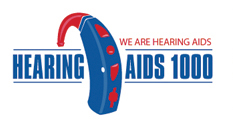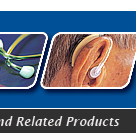|
Children and Hearing Aids
Reviews & Information
Hearing disability is detected from infants as young as four weeks.
A disability in a child becomes a disability in a family.
Further a growing child needs a frequent change of hearing aids. Unlike a spectacle for the eye, a hearing aid is a capability instrument and not a corrective instrument.
The degree of disability in a child may not change but the size of the ear and the canal keeps changing. A child requires hearing aids in both ears. If a hearing aid is fitted in one ear the other ear could lose the capability of sound recognition which may never be restored.
Parental controls are the main requirement in hearing aids for infants and toddlers who are not in a position to verbally express their needs. Hearing aids should be easily monitored and manipulated by parents.
The BTE (Behind the ear) style of hearing aid is a convenient and effective style for the child. BTE hearing aid styles are detachable, easily visible and easy to clean. They require fewer repairs and remakes in consonance with the child’s growing and changing needs.
A child’s hearing aid should be carefully analyzed and fitted by a trained audiologist because the language and communication skills of a child depend on it. The audiologist should determine precisely the degree of disability.
The amplification of sounds should be understood clearly by a child. With the great emphasis on research and development newer digital hearing aids have reduced the need for frequent changes. The audiologist should be able to fit the model of hearing aid easily. The hearing aid should be adaptable to changes at the child’s regular check ups with the audiologists.
Hearing aids with child safety hooks help in securing the hearing aid to the child. Thus the hearing aid chosen for the child should not only be durable but adaptable to frequent correction.
Many hearing aid companies offer free trial periods and longer warranty periods to make it easier on the budget of the parents. Additional functions that help parents of children with hearing impairments are directional microphones that help the child with focused listening, the ability to make loud sounds softer and increase soft sounds.
Many hearing aids come with remote controls and ETE (Ear to ear) technology to help parents monitor the child’s relationship with its hearing aids. Remote controls help the parent detect problems such as ruptures in the tube and weak batteries. Ruptures in the tube result in screeching sounds that can further affect a child’s impairment. Replacing weak batteries immediately prevents a rupture in a child’s auditory and communication system.
As the child grows out of infancy and reaches the school going age its needs differ. The age of childhood discernment requires new and more interesting instruments. Many hearing aids come in attractive colors which children prefer to skin tone. Hearing aids for this age group need to be sturdier in congruence with boisterous activity.
Battery door locks are required for fidgety children. Hearing aids with multiple programs and FM systems help the child cope in school and at home with relation to its parents teachers and classmates.
Hearing aids which are fitted with directional microphones for TV viewing, automatic telephone compatibility and alarms for unusual sounds will help a child increase its communication capabilities without compromising on safety.
When the child becomes a teenager, its needs become cosmetic. Hearing aids which are lightweight, virtually invisible, skin toned, cost efficient and capable of localizing sounds will make a hearing impaired teenager a happier and more communicative adolescent.
Today, most insurance plans offer coverage for children with hearing disabilities and considerably reduce the cost burden of the hearing impaired family. Organizations like the ‘Let Them Hear’, foundation offer advocacy for those who have been refused hearing aid coverage for their children by insurance companies.
Low income groups can benefit from approaching nonprofits like ‘Hear Now’, which is a leading private non profit low cost hearing aid donation service that dispenses need based recycled hearing aids. Service organizations like the Lions Club International, Air Force Hearing Aid Society, Children of the Silent World, Children with Special Health Care Needs, Disabled Children’s Relief Fund, Dorothy Ames Trust Fund, Easter Seals and the Hearing Aid Bank are but few of the many non profit organizations that a parent of a hearing impaired child can approach for help. Hearing aid manufacturers like The ‘Miracle Ear Children’s Fund’ and the ‘Starkey Free Hearing Foundation’ have welfare funds that donate free hearing aids to needy children.
Hearing aid manufacturers like Siemens, Oticon, Unitron and Widex with their well known program , WHISPER ( Widex Hearing Impaired Speech Research) are constantly changing the face of children’s communication disabilities giving the world’s future wealth better auditory welfare.
Top Children and Hearing Aids Offers: Updated |
Learn More: Celebrities and Hearing Aids




